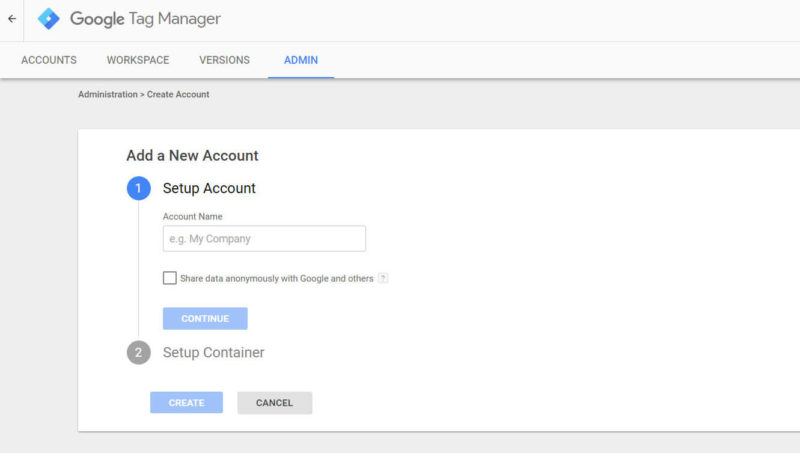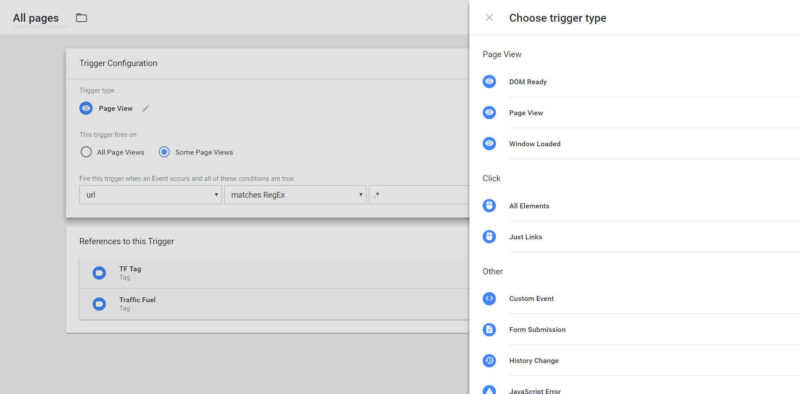How to use Google Tag Manager to show your clients results
Columnist Sherry Bonelli provides an overview of Google Tag Manager, including how get started with it.

Are you tired of asking your web developer to add code, snippets, pixels or scripts to your site so you can track remarketing, conversions, analytics and more? Google Tag Manager (GTM) allows you to add or update tags without having to bother your developer.
Google Tag Manager gives you control over how your tags are defined and how they fire. GTM involves a little bit of a learning curve, but once you understand the basics, you’ll wonder how you ever got along without it. If you’re an SEO who hasn’t yet delved into tracking codes (I know you’re out there, and it’s okay!), now’s the time to start.
Using tracking code will help you measure the results of your marketing campaigns — essentially, you’ll be able to show the results that your digital marketing efforts are making. And don’t worry, you don’t have to be a programmer to dig in. As an added bonus, you can use GTM to manage your clients’ campaigns as well — all without having to log into the back end of their websites.
Google Tag Manager is a large topic, so in this post we’re just going to cover the basics.
What is a tag?
A tag is a snippet of code that tracks and sends information about activities on your site to third parties (such as Google). You might use tags to track conversions or visits to a particular web page.
In the past, if you wanted to add tags to your site, you’d have to manually add these snippets to the source code of your web pages. This often required going through a developer, which could delay implementation for days or even weeks. And of course, if you needed to make adjustments or updates to the tags, you (or a developer) would need to do so within the page source code.
With Google Tag Manager, you add a single container code snippet to each page of your site. This container snippet handles the deployment and execution of all your tags across the site. You simply add, update and manage the tags you want to use within the Google Tag Manager interface.
Getting started with Google Tag Manager
To start using GTM, visit the Google Tag Manager login page. If you already have a Google Analytics account, it’ll be super-easy to set up — you simply need to log in with your Google account, and you’ll be ready to set up your tags.
The first thing to do is give your account a name. You’ll want to name your account with the name of your company so that you can find and manage each of the sites you have in GTM. It’s generally recommended that you have one account per company and one container per site.
Once you have your account set up, you will create your first container. Give your container a name and indicate where you want to use the container: website, iOS, Android or AMP.
Click Create once you’ve chosen your container location, and agree to the Terms of Service. Next you will be given two pieces of script to put on your site:
The Google Tag Manager snippet must be placed on every page of your website. Google cautions you not to put code in a hidden iframe and not to use another tag management system while using GTM (It can cause issues).
Once you’ve added your GTM snippet code to your site, Google Tag Manager is ready to go.
As your containers grow over time, it can get difficult to track all your tags, triggers and variables. GTM allows you to create folders to help you organize. With folders, you can organize your tags in groupings so it’ll be easier to update and manage as needed.
Setting up triggers & variables
Tags typically execute, or “fire,” when a web page loads or when some other user interaction occurs. In Google Tag Manager, you define triggers with tags to tell GTM when a tag should fire. A great example of a trigger is the “Page View” trigger, which can be used if you want to have your tag fire when a specific page loads.
You will want to tell GTM what to do when a certain action is taken by a user. Setting up triggers is easy to do — you just choose the trigger type:
Variables help define triggers and what data they send. For instance, you could set up a variable when someone goes to a specific page or clicks on a checkout button or download page.
More in-depth GTM features
Google Tag Manager has a lot more advanced features and details, like layers and setting up administrators/users. You can find information on all Google Tag Manager features on Google Tag Manager’s help section.
Remember to publish
Changes you make to GTM don’t work until you publish. Once you’ve added or edited tags, triggers and variables in a workspace, you’ll need to publish:
With a little learning and practice, you’ll find that managing the tracking code you use will be much easier and more efficient thanks to Google Tag Manager. Good luck!
Contributing authors are invited to create content for Search Engine Land and are chosen for their expertise and contribution to the search community. Our contributors work under the oversight of the editorial staff and contributions are checked for quality and relevance to our readers. The opinions they express are their own.
Related stories
New on Search Engine Land






